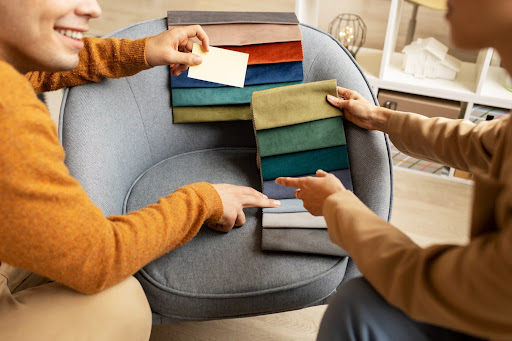Textiles and fabrics are terms often used interchangeably, but they have distinct meanings and applications that make them unique. While both play essential roles in industries like fashion, home decor, and manufacturing, understanding the differences can help you make informed decisions, whether you’re a buyer, seller, or simply curious about the textile world. Let’s explore the key differences between textile and fabric with clarity and depth.
Industry-Specific Uses for Textile and Fabric
Active ranges of businesses depend on textiles and fabrics to resolve specific industry needs. The textile industry emphasizes product development at T & A Textiles And Hosiery Limited Information by producing premium yarns and materials which serve footwear manufacturing and healthcare sectors and vehicle manufacturers. Fabric manufacturing centers on producing items directly accessible to consumers that include everything from clothing to bed linens.
Understanding starts from defining things. Any material fabricated by thread interaction qualifies as a textile regardless if the thread structure is woven knitted or bonded. The definition of textile covers raw materials beginning with plant elements like cotton and wool through all stages of processing until materials acquire their final form. The finished material prepared for apparel uses or furniture framework which fabric represents selectively out of textiles.
Raw Materials Versus Finished Products
Textile and fabric present distinct functions because they occur at different stages along the production process. Raw textile materials appear as yarn or fiber before becoming the finished final product called fabric.
The Manufacturing Process: From Fiber to Fabric
Fabric creation differs from the textile production process from start to finish. Standard material processing methods like spinning and weaving create textiles although fabric development requires multi-stage processing through dyeing and printing and texturizing processes. Fabric stands distinct from textiles because manufacturers concentrate on developing textiles into precise products for specific applications.
Applications: Where Textile and Fabric Excel
The applications for textiles extend beyond those for fabrics. Textiles serve industries that include automotive manufacturing alongside medical applications and technical gear production yet fabrics mostly serve two primary purposes as components for clothing and home decor applications. Textiles achieve their versatility because they allow production into multiple specialized products but fabrics mainly focus on consumer needs.
Technical Textiles Versus Everyday Fabrics
Technological fibers that compose geotextiles and Kevlar undergo design processes to meet specific needs such as adversary applications and fire protection features rather than the comfort-centered design of fabrics.
Structural Differences Between Textile and Fabric
Textiles and fabrics display fundamental dissimilarities in their basic format which is not immediately noticeable. The organic form of textiles generally exposes their original threads either as woven patterns or knitted interweaving strands. Treatments along with smoothing processes transform fabrics into materials which offer better images for consumer consumption. Because fabric producers finish this product satin delivers a luxury feeling to users but unfinished satin exists as a rough unfinished textile material.
Cost and Value: Textiles vs. Fabrics
Pricing levels for textiles stay lower compared to fabrics because fabric manufacturing advances production by additional steps. The final stage of processing requires additional effort and substance treatment thus resulting in elevated value for textile and fabric. Fabrics remain the best selection for end-users yet textiles appeal more to manufacturers.
Textures and Visual Appeal
- Fabrics receive engineered development because of both their touch experiences and appearance considerations. Textiles concern themselves with durability requirements instead of influencing functional design enhancements. Finishing procedures during fabric manufacture through dyeing and printing both present more useful characteristics which fit clothes and decoration requirements.
- The textile sector employs innovative dyeing and printing methods to improve fabric visual aspects.
- Fibers require dye treatments to receive intense hues and need printing to bring forth complex designs. Fabric finishing methods create visual enhancements that are not present in standard textile products.
Durability and Lifespan Differences
Textiles demonstrate heightened resistance against production-related damage through specific design techniques which leads to extended durability than fabrics do. Durable fabric treatments enhance environmental resistance which extends the lifespan of fabrics during their actual applications.
Environmental Impact: Sustainable Choices
The way sustainability operates within textiles stands distinct from how it operates within fabrics. Bulk production of textiles generates heavy carbon emissions caused by persistent energy-consuming manufacturing methods. Textiles obtain eco-sector sustainability through the application of environmentally conscious dyeing and finishing processes. To support environmentally friendly choices consumers need to select fabrics that hold sustainable certification along with verifying ethical production standards.
Consumer Perception and Usage
The differences between consumer attitudes and practical application of textiles compared to fabrics exist at a fundamental level. Textile products serve industry users instead of targeting retail consumers. Fabrics exist to meet consumer needs by delivering comfort together with style elements and useful features. The difference between textile and fabric affects every aspect of branding together with sales strategies for the textile and fabric industries.
Conclusion
While both textile and fabric seem related at first glance they exhibit distinct definitions along with separate production methods and industry-specific applications and consumer targets. Learning about the differences between textile and fabric helps you understand the material world in a clear and knowledgeable way.








